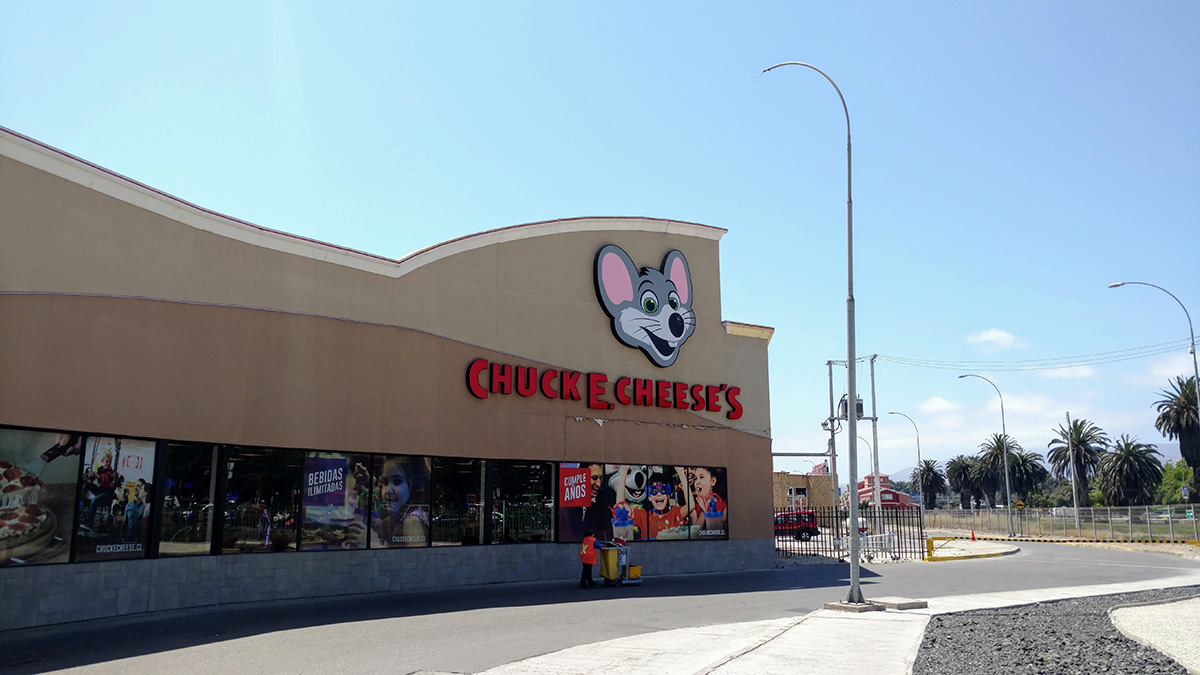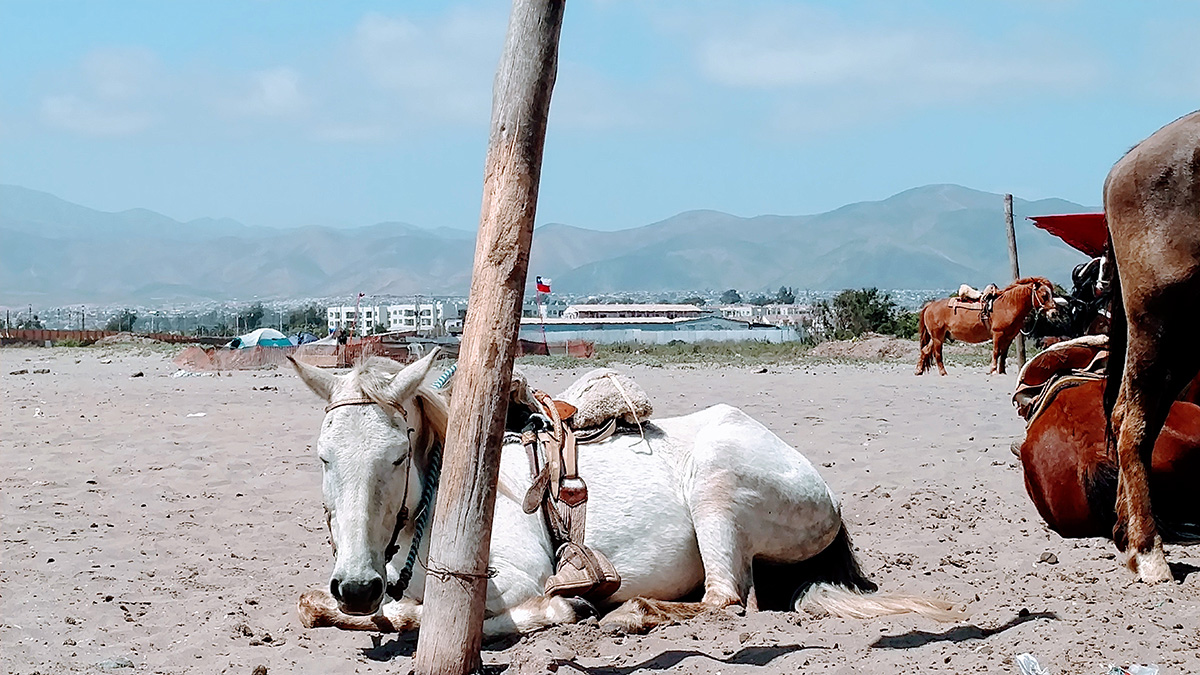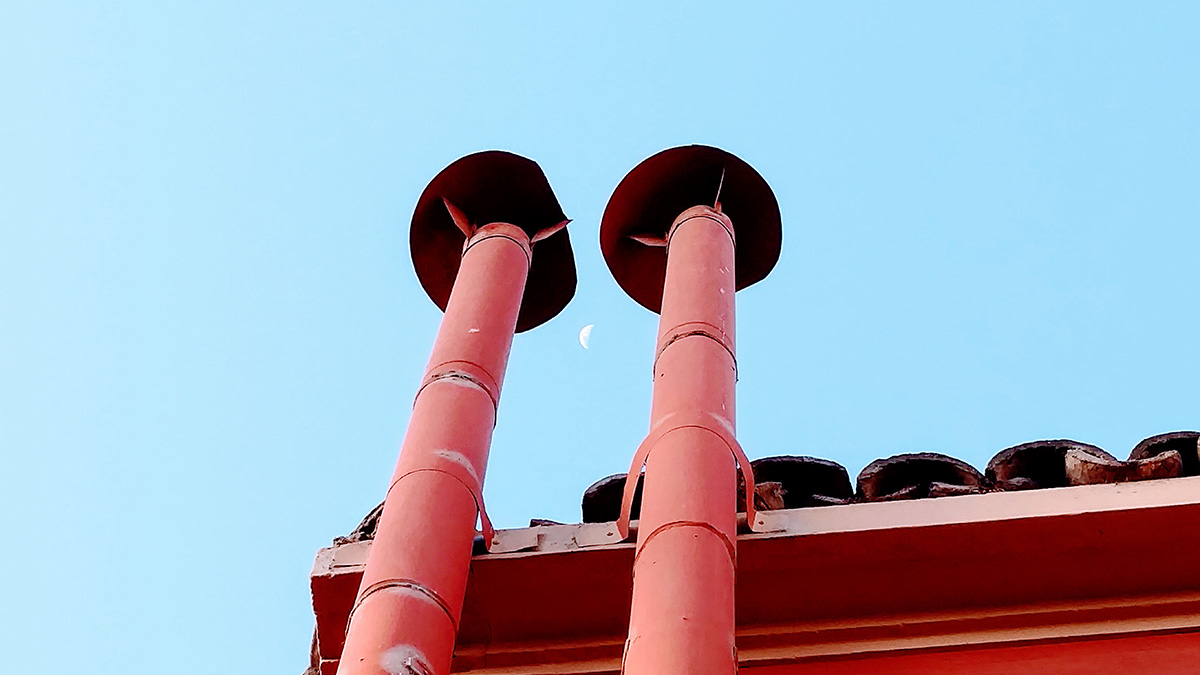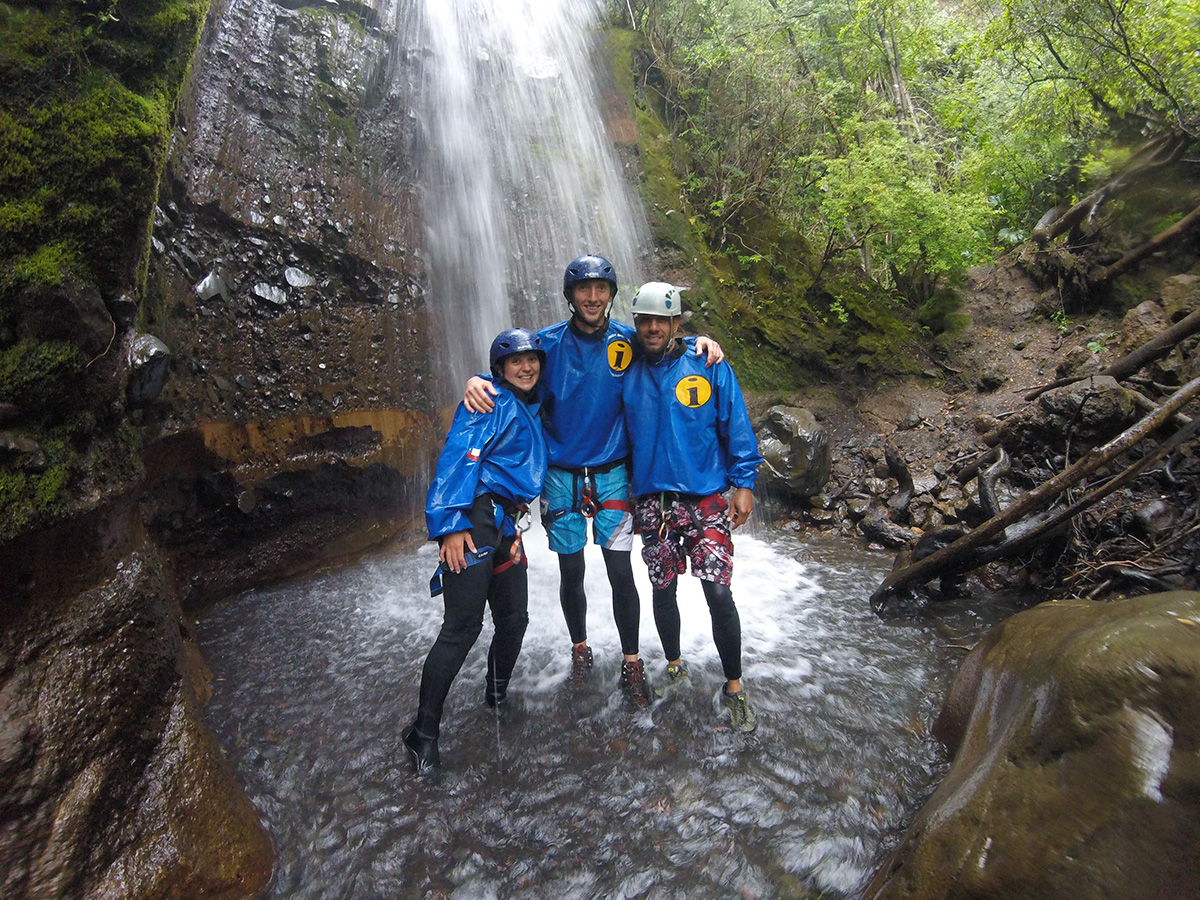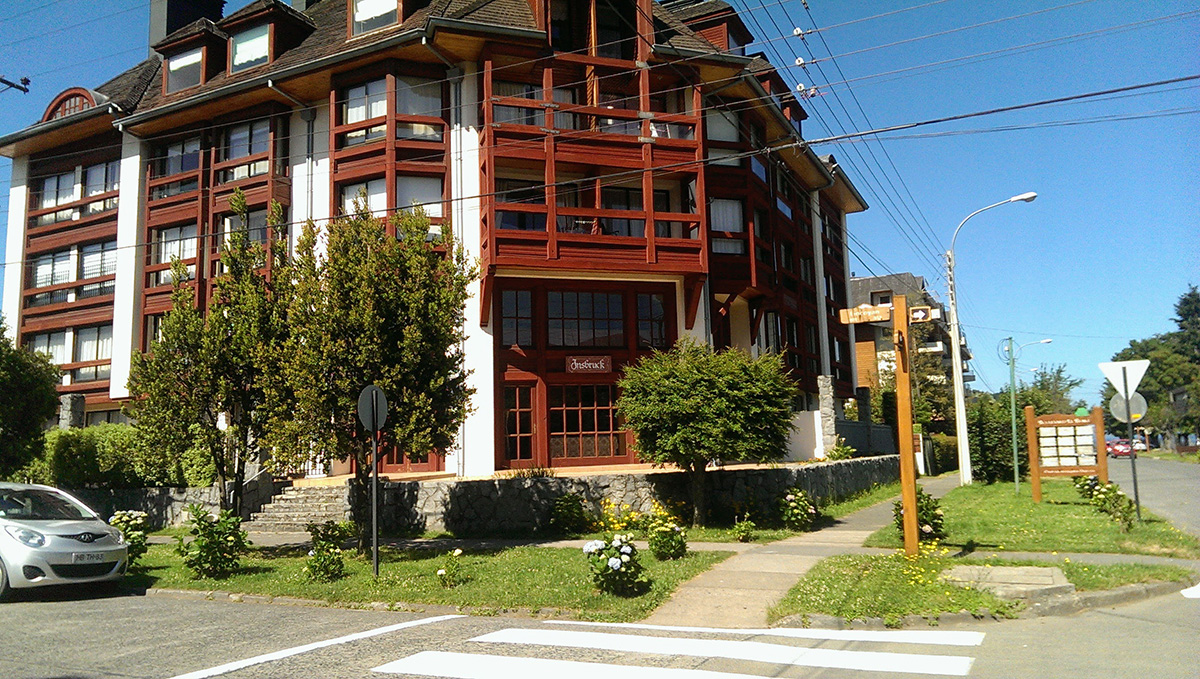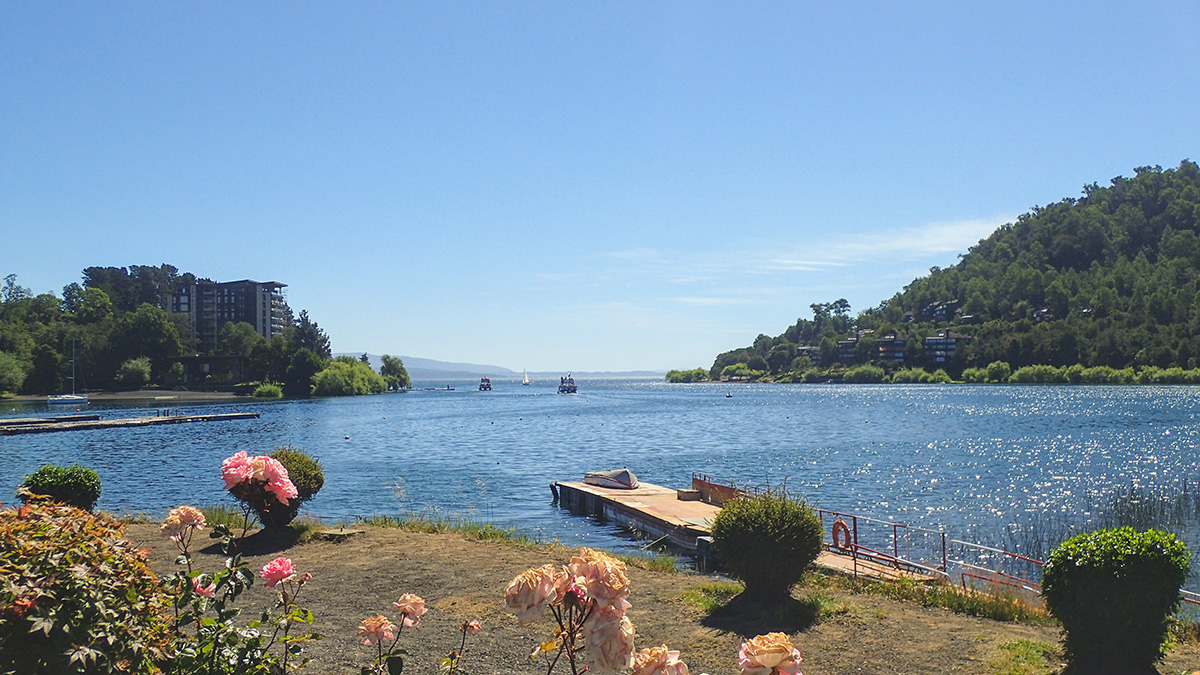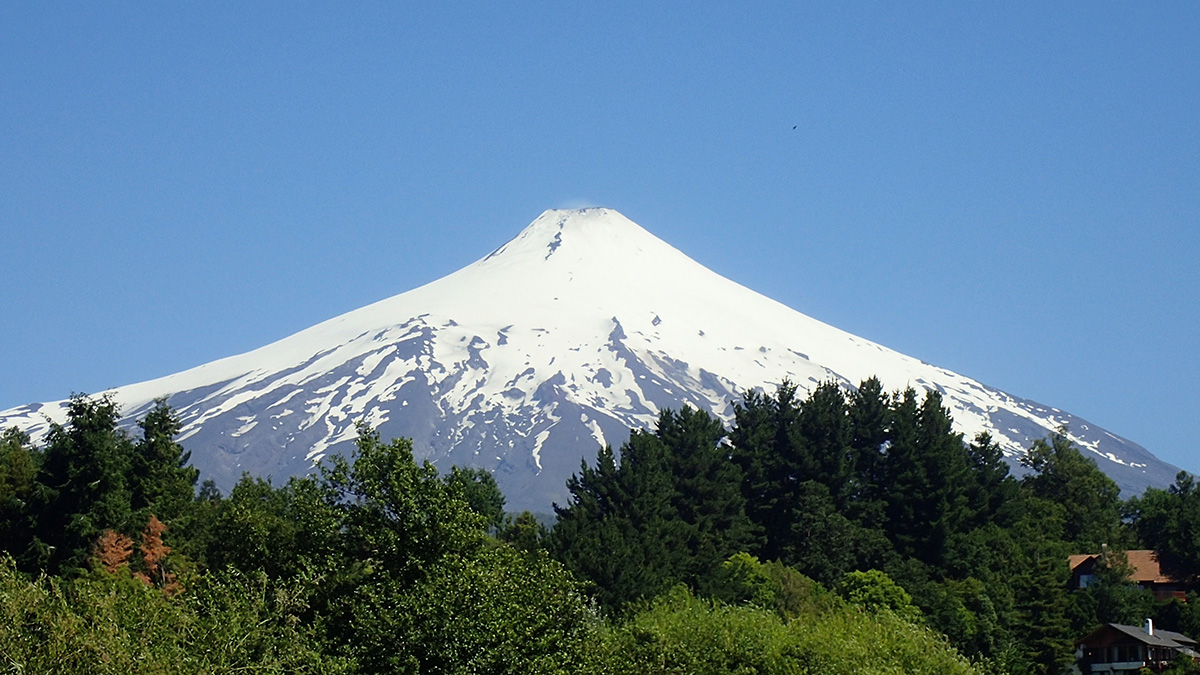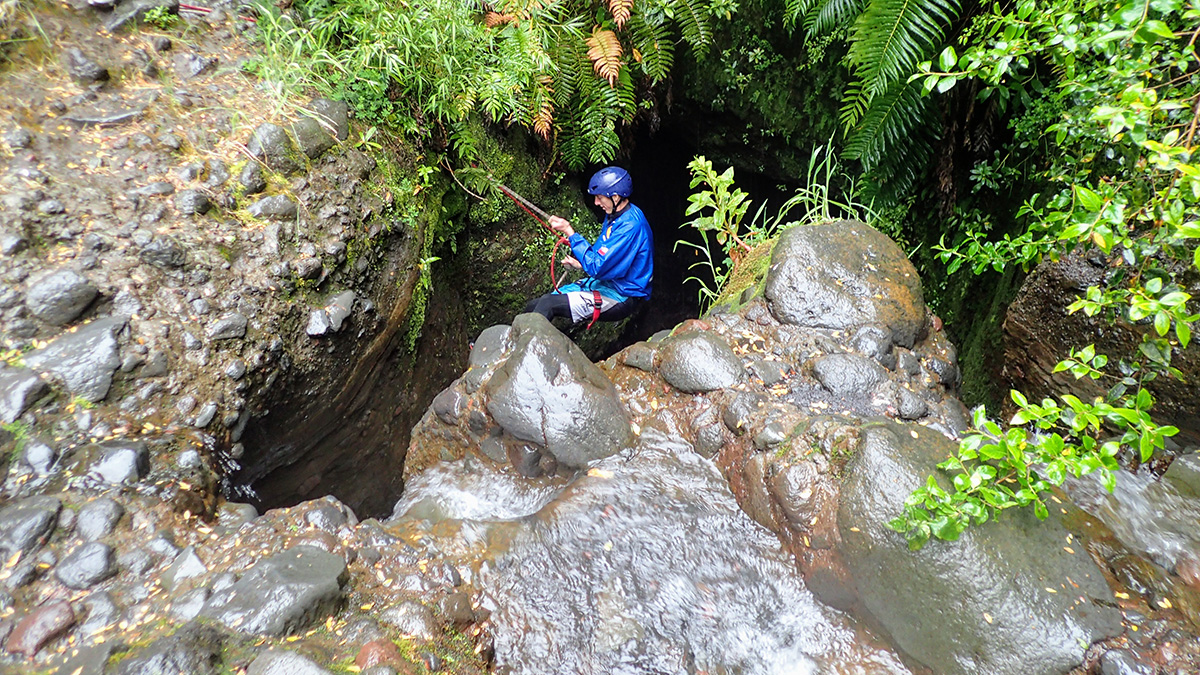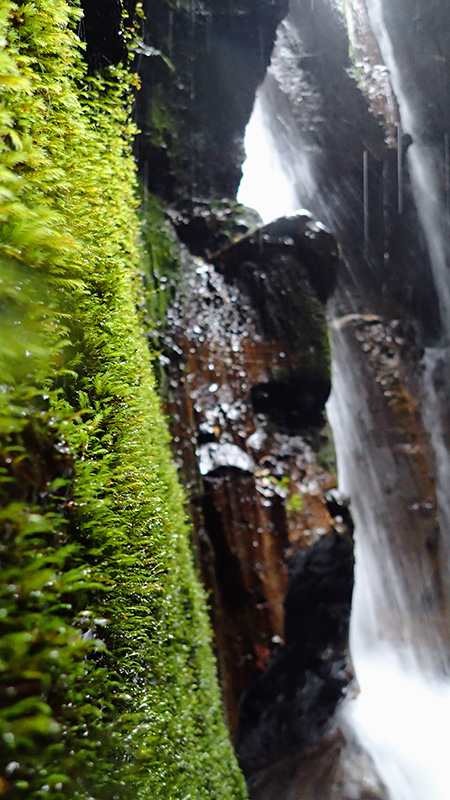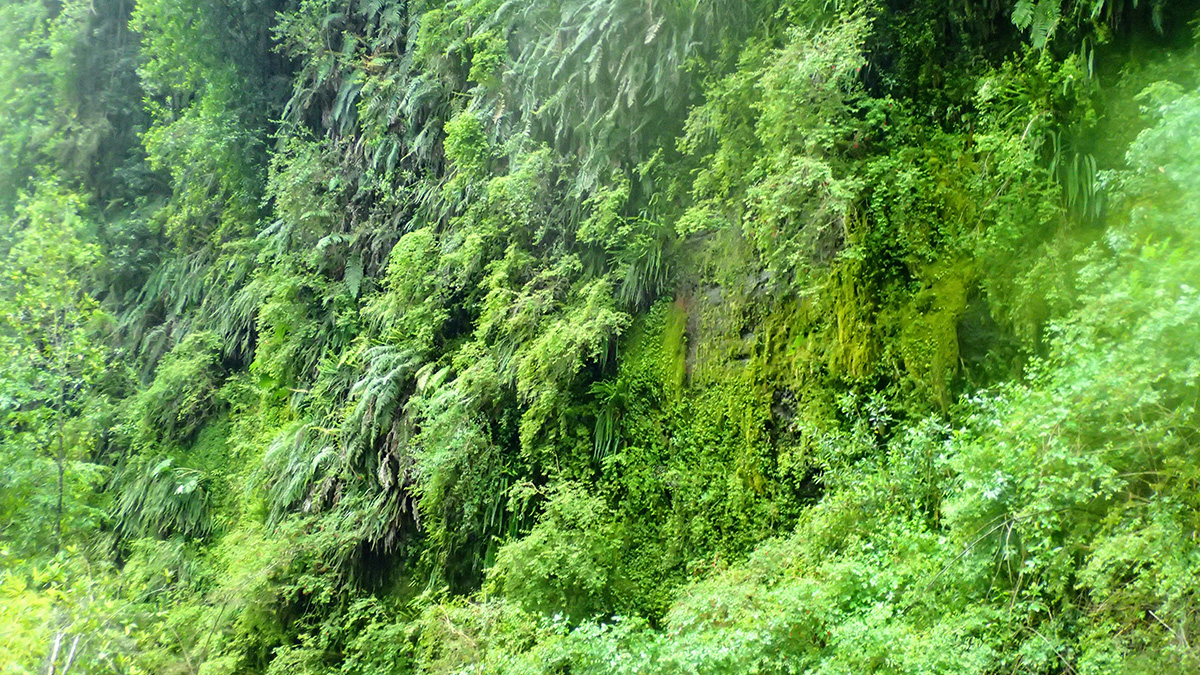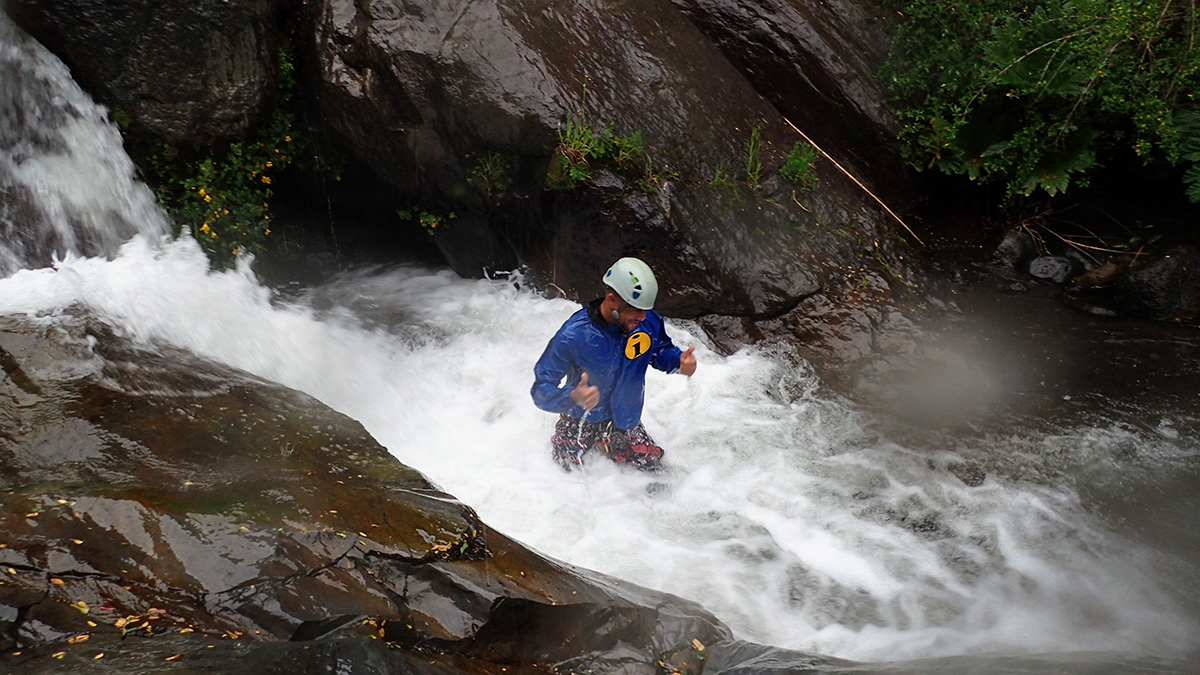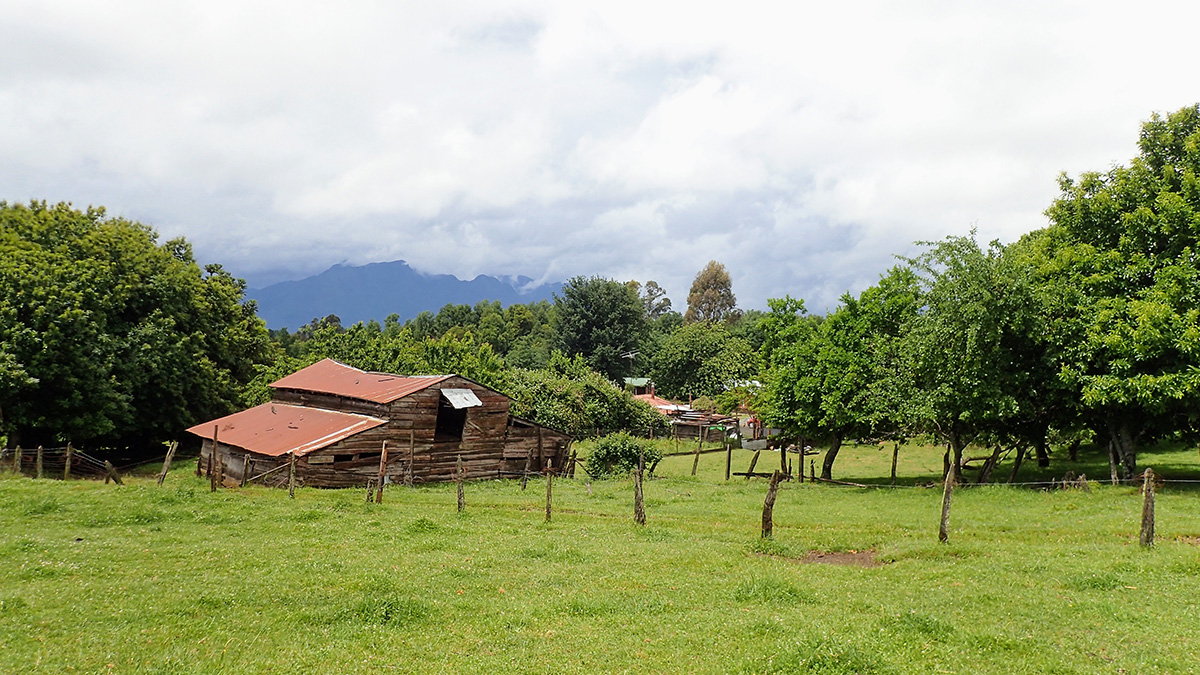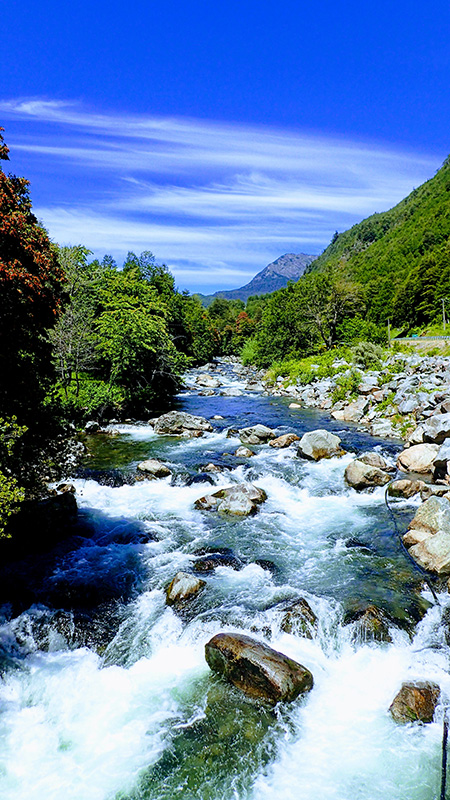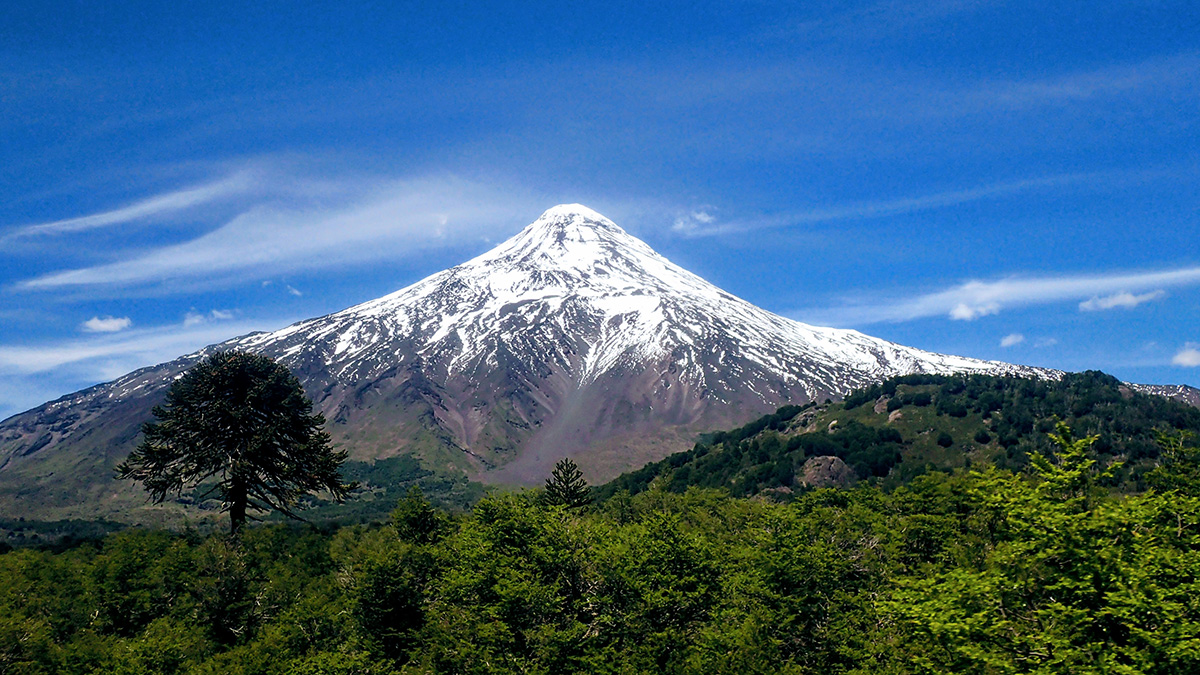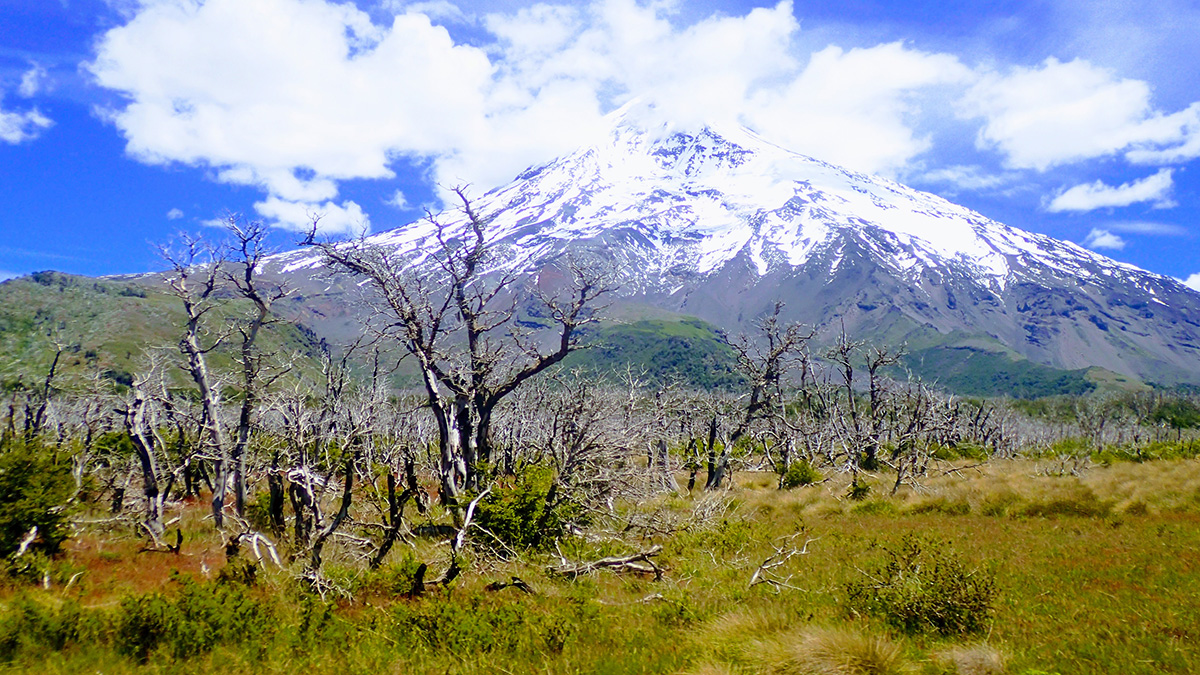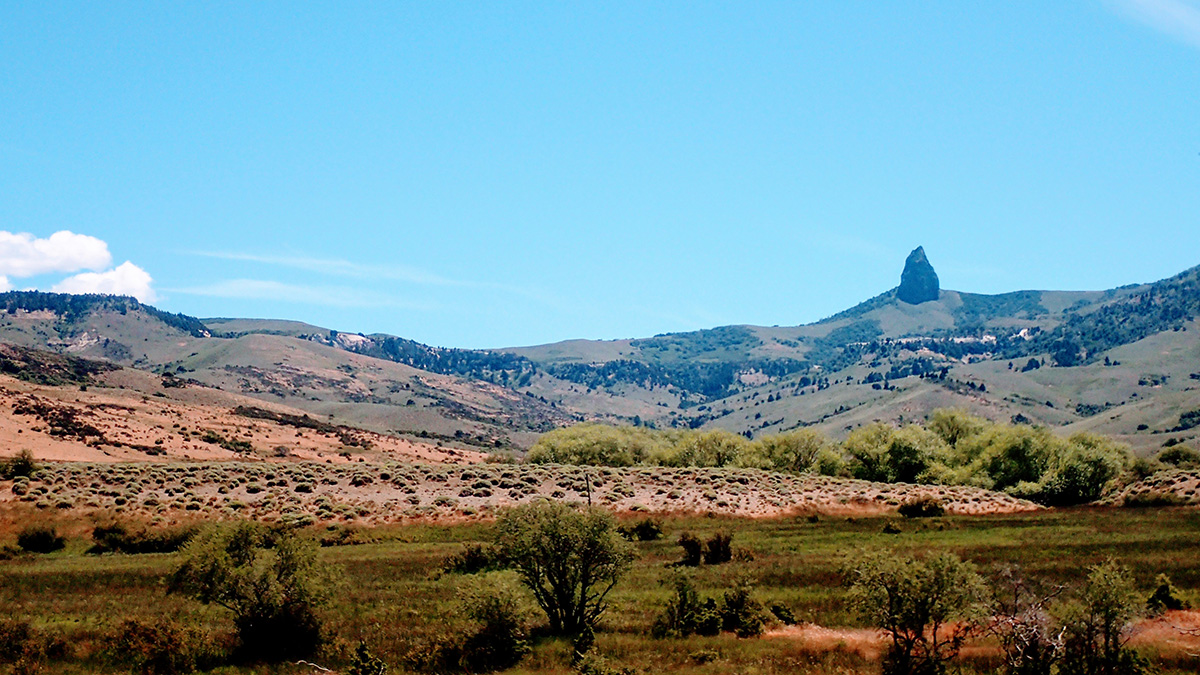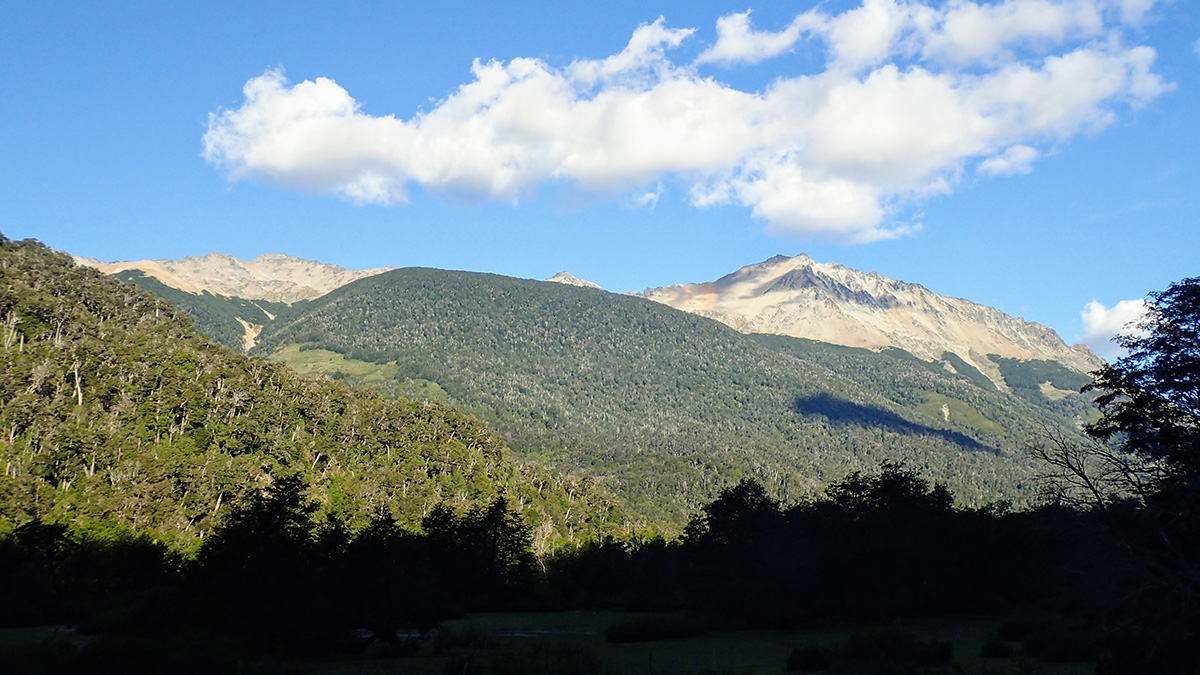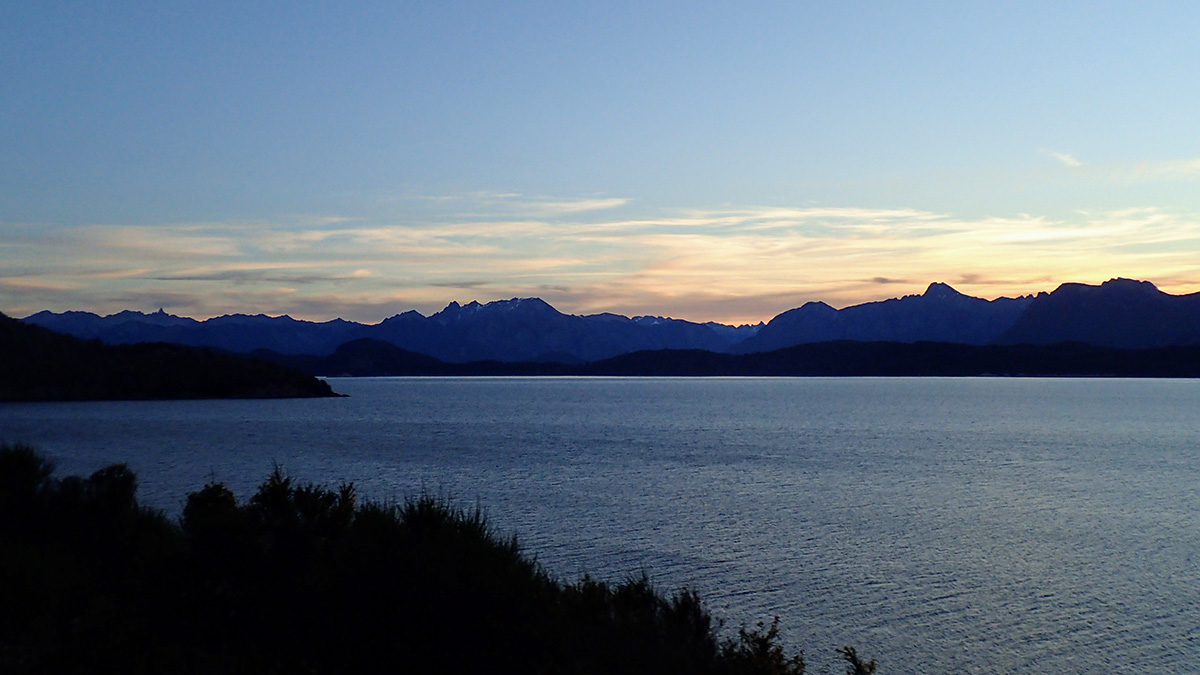Crossing the border into Chile from Bolivia is to go from one extreme to another, from possibly the continent’s poorest country to its richest. It won’t hit you for the first half hour if you’re coming across at the Uyuni/San Pedro border, as you’re still in “wilderness” for the first little while, but as soon as you get on one of Chile’s highway roads, you just know you’ve entered a different world. By the time you get to your first town, no matter which one, you might be forgiven for thinking you’ve left South America altogether. Chile is not what I expected. The contrast between Bolivia and Chile could not be greater, nor could the difference in cost of living. The truth is, I have mixed feelings about Chile. On the one hand it’s developed, organized, and rich – being a powerhouse and likely the richest country in South America – but on the other, it lacks soul, identity, and warmth, not just in terms of its climate but also in its people.
CHILE : GENERAL FACTS
| Population | 17,650,114 (July 2016 est.) |
| Capital | Santiago; note – Valparaiso is the seat of the national legislature |
| Languages | Spanish 99.5% (official), English 10.2%, indigenous 1% (includes Mapudungun, Aymara, Quechua, Rapa Nui), other 2.3%, unspecified 0.2% |
| Religions | Roman Catholic 66.7%, Evangelical or Protestant 16.4%, Jehovah’s Witness 1%, other 3.4%, none 11.5%, unspecified 1.1% (2012 est.) |
| GDP | $436.1 billion (2016 est.) |
| GDP Per Capita | $24,000 (2016 est.) |
| Agricultural Products | grapes, apples, pears, onions, wheat, corn, oats, peaches, garlic, asparagus, beans; beef, poultry, wool; fish; timber |
| Industries | copper, lithium, other minerals, foodstuffs, fish processing, iron and steel, wood and wood products, transport equipment, cement, textiles |
| Labor force |
agriculture: 9.2%
industry: 23.7%
services: 67.1% (2009 est.)
|
| Population below poverty |
14.4% (2013 est.)
|
Chile is a very long and narrow country straddling the west coast of South America, stuck between the Andes and the ocean. It begins in the center of the continent and extends south almost to the edge of Antarctica. Most of it is arid desert and semi-desert, with forest becoming more prevalent as you move south. The oceans are frigid, the climate is dry for most of the country, and the scenery is often breath-taking. Strictly from an aesthetic standpoint, Chile has a lot going for it. From its deserts to its forests, coasts to Patagonian landscapes, you’ll find a wide variety of natural sights to explore. But crossing into Chile is more like crossing into North America than any other country in South America. From its forests, to its well-maintained roads, to the incessant stream of American fast-food chains, to the prices of goods and services, to the quality of the air and the climate, you’ll likely feel a familiarity in Chile, if you’ve spent any time in the US and/or Canada. For me, it was a strange sort of homecoming and had it not been for the cost of living and my precarious finances, I would likely have enjoyed the country considerably more.
North-East Chile
San Pedro de Atacama
As a documentary fan, I had heard of the Atacama desert many times. The driest place on earth and home to a number of international stellar observatories! So when I was in Bolivia looking into where I’d cross over into Chile, I was excited to be going to a town within the Atacama desert. Truthfully, the ride into San Pedro did not feel at all like we were headed into a desert, but it took nothing away from the beauty of the scenery. The area is magical, full of volcanic mountains, bright green shrubbery, and red rock. I had heard that prices in Chile were high, but I wasn’t prepared for the shock and it unfortunately both scared me and negatively affected my experiences. I knew I had to make the best of things, but the sheer costs of everything put a real damper on my options. The town itself was really cute, but also fake. It was clearly created to cater to tourists and adopted a very Arizona-style layout and architecture, which while attractive seemed unoriginal and blatantly commercial. It was unnecessary, but I can’t say there wasn’t an attraction there, so I guess it works. With it though, came the exorbitant prices for everything from food to accommodations to tours. What cost $2 in Bolivia cost nearly $10 in San Pedro. I sincerely hoped this wasn’t representative of Chile in general, but in the meantime, on the inside, I was stressed and annoyed and almost immediately looking forward to leaving, which was a shame, because it was such a pretty area.
The town itself is tiny. The use of wood and brick everywhere give it a unique charm that, again, was reminiscent of what I’ve seen of small Arizona towns and reservations. It was undoubtedly a huge tourist trap, which explained the prices that the average Chilean would never agree to pay but it attracted travelers from all around the world and even from within Chile. In fact, in terms of tourist density, this was undoubtedly the hot-spot of Chile. It’s not to say there were more tourists here than say Valparaiso, but the concentration was much higher. Aside from the people working in the stores and providing the tours, the population of the entire town was composed of tourists from pretty much everywhere. It was no wonder the prices were so high. Added to the reality that there are so many affluent travelers here, even if most were backpackers, is the simple fact that SPdA is in a desert and quite remote, meaning everything needs to be transported in, including water. So it’s no surprise that prices were inflated simply because they could. It took a while to get over the shock but I looked into what options were available to me and began making plans. One thing was certain, I wanted to go to the Valle de la Luna (Valley of the Moon). This was priority #1. So, I walked around, found a decent price for a bike, and the next day I rode across the desert alone, into a scene that many documentaries had previously referred to as being one of the places on earth most like the surface of Mars. And it was incredible.
It was a nice ride getting there on a decent highway, and then, once at the entrance, onto a dirt road which made the ride considerably harder. The sun at this point wasn’t pulling punches, but I was happy, and enjoying the experience. First stop was a cave network that you could walk through. Of course, being me, I found a tiny entrance into a part of the cave that is off-limits and decided to crawl into it. I could see why it was off-limits. It was dark, tight, and clearly lethal if ever there were a rain shower in the area, as you could see where the water had carved out the cave. Even the smallest flash flood would leave anyone caught in here with no options. But I knew there was no threat of that and continued, enjoying the solitude and curious as to where it would lead. Eventually it merged with the original path but I was glad to see the lesser known sections of this network. After the caves, the area opened up and the land fell away ahead of me so that I could see clear across the face of the earth. This was definitely desert. There were no birds, no insects, no sounds but the wind blowing. It was hot, but a beautiful hot, and everything was reddish-brown. It could have been Mars, were it not for the warmth of the sun. I snapped a bunch of pictures but this is a prime case of photography not being able to do justice to reality. I was in a great mood exploring every inch I could, as many paths as i could, recognizing I was going to be tired for the ride back, but not caring. I was getting burned by the sun, but being in that expanse, that deadly, quasi-pristine, exotic space filled with salt formations, earthen spires, and rock walls converted into glass by nature alone, was worth every minute. If you get a chance, I would rank this as SPdA’s single best experience on offer.
While there I also checked out an astronomy tour. I took it in Portuguese as it was the only one available on the day I wanted it, but I strangely understood almost all of it. The tour took place at a home where about 8 amateur telescopes were located. I say amateur but some of these were massive. Unfortunately, the driest desert happened to have clouds that night, but it wasn’t too heavy and we still got to see a number of celestial objects. I was disappointed, to be honest. I had hoped it would be much bigger telescopes that would provide clearer and way more magnified views, but that wasn’t to be. Still, seeing the globular cluster and a few other bodies was a good tease.
That was the extent of my SPdA experience really. I spent a couple nights walking or riding around outside of town looking for the best place to sky-watch and on one occasion found a great spot where I stayed for hours enjoying the clear skies, satellites and shooting stars until the bitter cold forced me home. I don’t really know how much more there is to do there, but I would go back, take a bit more time, and explore a bit more.
Central Chile
La Serena (Population: 217,070)
I left SPdA by bus and didn’t want to spend over 24 hours traveling in order to get to Santiago as quickly as possible, so I chose a city in between the 2 to spend a couple days in and relax before getting back on the road. It’s this bus ride that really brought forth the difference between Chile and every other country I had been to in Latin America. It felt very Americanized. It was clear that US influence here was significant and that the US model was seen as the path to prosperity. La Serena is where I got to see how that translated into Chile’s cities. There’s nothing special about La Serena. It’s a coastal town, that for the most part looks relatively new, in its city planning. What struck me were the American styled streets, orderly, wide lanes, and often adjacent to a Pizza Hut, a McDonald’s and even a Chuck E Cheese. I never thought I’d see a Chuck E Cheese in Latin America, but there it was, not 2 blocks from my hostel. It was surreal. This isn’t to say that there are cities or parts of cities that have the Latin American feel, but what’s striking about Chile is how often it feels like something else, something too familiar. I only spent a couple days there and didn’t venture into the sister city of Coquimbo which is apparently much more interesting, but I was already getting a pretty good impression of what Chile was about and it wasn’t really clicking with me.
LA SERENA
Santiago de Chile (Capital and largest city. Population: 5,150,000)
Santiago grew on me significantly. My first impression of it was decent but over time, I started feeling as though I could potentially live there. Granted I was there in summer (Late November) so it was warm and sunny most of the time. But the city was way more modern than I expected. It had all the hallmarks of a real city to me, public transport including a metro, organization, public parks, nightlife, and a feeling of general energy in the air. I don’t know what winter would be like and I imagine it gets very cold there, but for the time I was there, I was impressed. Particularly impressive is how young the demographics seem to be and how bohemian the vibe was in the downtown core. There was life here, there was a sense of a cosmopolitan lifestyle and outlook. It felt good and parts of the city were quite beautiful. There were artisan street sales geared to the locals, no tourists, plenty of street art, a whole neighborhood of just bars and restaurants called Bellavista, plenty of public parks. I was impressed and actually found myself conflicted about leaving. I would definitely go back, though i doubt I could really live there. Chileans are kind enough, but lack the warmth you find further north on the continent. That isn’t necessarily an issue, but I found myself connecting more with all the other South American nationalities living in Chile than I did Chileans. And to be honest, for the first time, I felt a distinct air of racism in Chile and in Santiago specifically as well, which surprised me. Santiago is clean but not too clean. Parts of it have that bohemian feel to it that I really really liked, but I wondered how much of that was available outside of the small section of the city I found myself in? I knew I was in the most tourist-friendly area and had been told by Chileans themselves that the rest of the city and the outskirts were nothing like this, and in some places were quite dangerous. I’m sure that’s the case, though the dangerous part I’ve always found locals to be overly sensitive to. It’s not to say there isn’t danger but it’s generally much less prevalent than locals say it is, as I’ve heard that about essentially every city I’ve been in throughout Latin America. Unfortunately I never ventured out far enough while there to see the other side of the city, as it was around the time of the US presidential elections and I was consumed and obsessed with the wind-up and the results, not believing what happened and desperate to understand how things had gotten so bad. Combined with work, financial stresses and a lack of motivation, I was happy to spend most of my time at the hostel or walking around the neighborhoods and parks in the area. That being said, it was almost summer, it was warm and there was a sense of connection to the city that grew with time, to the extent that I wondered whether I should leave at all, or make plans to return at some later date. I was torn and felt I was leaving something with potential behind when I left. That being said, I can imagine it being incredibly cold during the winter and that after a few months, the city would begin to feel really small and limited. Despite that, I’d be willing to spend more time here and get to know the city and its people a bit better.
Valparaiso (Population: 248,070)
Valparaiso. I had heard so much about this place. In fact, I think it was probably the single most highly recommended destination in Chile. Given it’s proximity to Santiago, I saw no reason why I should pass it up. Valparaiso is known for its colorful houses on the hill overlooking the sea and a great small city vibe, good for partying but also bohemian in style. The part of Valparaiso I arrived in coming via bus was at the edge of the market, and it was a mess. It was the least Chilean place I’d been to up to now. Wreaking of fish, dirty, and sketchy. Somehow though, it was refreshing. Still, I was curious as to why people ranked it so highly based on my first impression. I knew there had to be more to the story. Off in the distance in the direction of the downtown, on the mountain overlooking the sea, was indeed a colorful scene. I figured there would be good opportunities for pictures at a later date. First was a walk down to the ocean where I was greeted by seals and birds similar to those I had come across in the Galapagos. This meant very cold waters. In any case there was no reason to go in the water here. Day time temperatures here would never rise to a level that would entice me to brave the cold and not entirely convincingly clean waters.
Valparaiso and her twin sister, Vina del Mar are coastal towns, which once relied on fishing but have diversified over time to attract tourist dollars from within Chile and without. Vina del Mar is the classy, bougie younger sister, and Valparaiso is the older cigarette smoking, hippie of the family. That being said, this particular brand of hippie didn’t quite connect with me. I never quite “got” Valparaiso. It didn’t feel bohemian to me, it just felt sketchy and over time, it proved itself to be just that. Almost every day, travelers return to the hostel would recount stories of how at least one of them got robbed that day. In all my travels, this was the place I heard the most stories about thefts. The second worse, based on anecdotal accounts, was Cali. However, I never got robbed in Cali but I got robbed twice in one night while out in Valparaiso, the first time was just a pick-pocketing of my cigarettes (ya, I’m serious). That annoyed me, especially since I felt it happen, but by the time I turned around I couldn’t tell which of the guys had done it. Nothing worth fighting over, I just made a face, told them I hoped they were proud of themselves and went on with my night. The second, was much more significant, involving some violence and the loss of my 3 month old phone. From this moment on, in fact, from Valparaiso onward, my luck completely changed up until I left South America (my welcome had officially run out). Valparaiso was the turning point I would later realize. So, undoubtedly this has colored my impression of the city, but to be honest, this isn’t why I didn’t quite like it. Sure there are some cool places here. little bars and restaurants, a couple clubs, but there isn’t much else and there is a distinctly sketchy feel to this city that I think really has a big impact and it’s not necessarily about being robbed. It’s hard to explain but it seems like a place where alcoholism, mental health issues, drugs and homelessness are rampant. More so than almost anywhere else I’d been. And that was a shock given that fact that Chile seemed to be the most developed country on the continent. The contrast here is stark and that put me on edge the whole time I was here. I just didn’t find that much to love here.
South Central Chile
Pucon (Population: 22,000)
Pucon and other destinations like it are to me what people should visit Chile for. Sure you can check out its cities and of course I always recommend people at least get an idea of what kinds of major cities each country has built over its history but for some countries, in fact many, the best things are far from its cities. Chile is one of those countries. Yes, Santiago is interesting, but it’s not unique, it’s not particularly special, you won’t be missing out by not visiting it. The further south you go however, the most things get interesting, the more the country has “unique” on tap for you. Pucon is a tiny place, on the edge of a lake, straddled by the Villarrica volcano, and surrounded by forests, rivers, and plenty of waterfalls. It’s a pretty town in a beautiful area. There are lots of places to visit around here and a few options on doing so, like renting bikes, going on tours, or taking buses. It’s expensive, as is everywhere else in Chile, but it doesn’t feel as though you’re being taken advantage of as much as other places in Chile. The town has a distinctly European alpine feeling to it and I couldn’t figure out whether this was via organic means or coordinated, so in a way that’s a positive. It’s a tourist town and there’s no doubt about it, but it’s clean, and has a relaxed vibe to it that I think most people would enjoy. You can hike up the volcano, go for a rappel/hike down into the river’s canyons. I chose the latter and it was incredible. It was my first rappel experience, which added a bit of excitement to the whole thing, even if the rappelling itself wasn’t all that harrowing, but the scenery, the lush vegetation, the slick canyon walls, really made for an incredible experience. Simply from an aesthetic standpoint, it’s gorgeous, and something I’d highly recommend. I kept looking at my bank account and knew I was running out of time/options so I didn’t partake in most of the activities here, but there’s no shortage. You could easily spend a week or 2 here in the summer months and get a wide range of activities under your belt. I suspect many of the towns and cities in this area and on southward are very much like this, beautiful, natural destinations that beg you to take pictures and explore the surroundings in whatever ways you can.
PUCON & SURROUNDINGS
Conclusion
All told, I didn’t really enjoy Chile as much as I had hoped I would. The combination of dwindling finances, loneliness, the cold, the shock of the prices crossing in from Bolivia and the inescapable familiarity it displayed to North America made it feel less like the adventure I was expecting. That being said, much of that was on me and my frame of mind. Undoubtedly under different circumstances I would have enjoyed it considerably more. Additionally, I think had I been more equipped to handle the cold and had my finances permitted, I think I would have enjoyed going further south into Tierra del fuego to do some hiking and exploring down there in the more natural and unique landscapes of the far south. But Chile marked the start of my turn in “luck” and things just got harder from there on in. I would certainly like to revisit and will likely do so, making sure to check out some of the parts that I didn’t get a chance to visit. In a way, it feels like a waste to have gone to Chile without checking out Tierra del Fuego but it is what it is. Sure its people aren’t particularly friendly, and there’s no feeling of real culture here, aside from the unique twist on spanish that is spoken there, but Chile was never known as a cultural hotspot to begin with. Development is its claim to fame and it’s wide range of environments is the reason you’d want to visit and for that, Chile will not disappoint, but I can’t rank it anywhere near my favorite destinations on the continent. But, that won’t stop me from trying again, better prepared and with fuller coffers.
